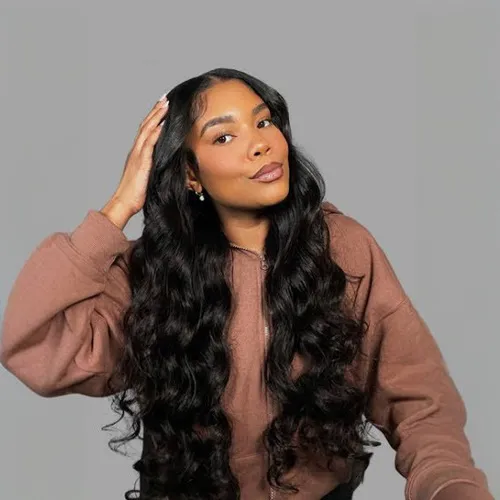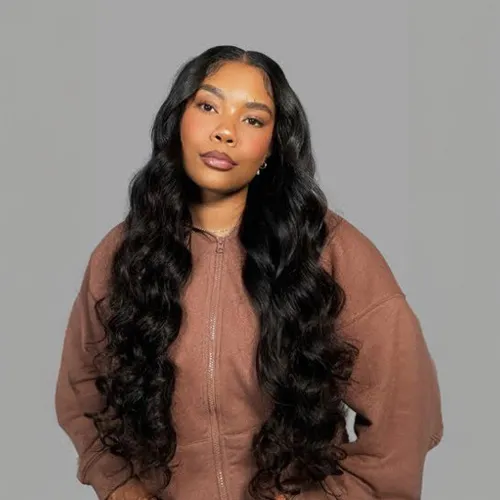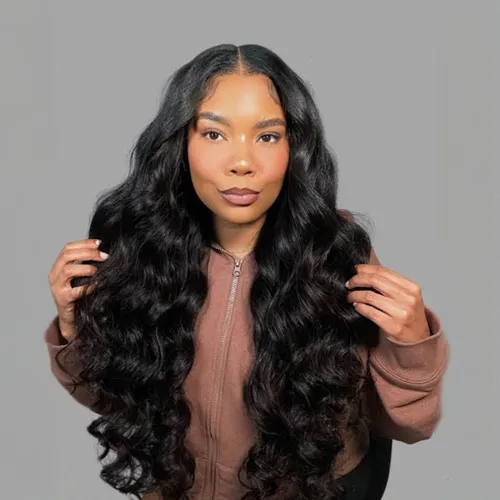Why Are U Part Wigs Now One Of The Most Popular Wigs?

U-part wigs have carved out a significant niche for themselves, becoming a go-to choice for many. This surge in popularity can be attributed to their unique design, versatility, and the ability to blend seamlessly with natural hair, offering a look that is both authentic and stylish. Understanding the appeal of U-part wigs involves exploring their design, the benefits they offer, consumer trends, and the role they play in the broader context of beauty and self-expression.

What are the benefits and drawbacks of U part wigs?
U-part wigs have surged in popularity for several reasons, offering unique advantages to wearers while also presenting certain limitations.
Benefits of U-part wigs.
a. Promotes healthy hair.
U-part wigs can protect your natural hair from daily wear and tear, reducing the risk of damage from styling tools and products. They allow your hair to rest and grow, potentially leading to healthier hair over time.
b. Natural look.
One of the most significant benefits of U-part wigs is their ability to offer a natural-looking hairstyle. The U-shaped opening allows you to blend your natural hair with the wig, making the hairpiece seem like a part of your own hair. This seamless integration is particularly appealing for those looking to maintain a natural appearance.
c. Ease of application.
Compared to other wig types, U-part wigs are relatively easy to put on and take off. They can be secured with clips or combs attached to the base, eliminating the need for adhesives, which can be harsh on the skin and require a lengthy application and removal process.
d. Comfort and breathability.
Since part of the wig is open, it allows for better airflow to the scalp compared to full wigs, making U-part wigs a more comfortable option for extended wear. This feature is particularly appreciated in warmer climates or during physical activities.

Drawbacks of U-part wigs.
a. Requires a good match.
For a U-part wig to look natural, it needs to closely match your hair texture and color. This requirement can be challenging for those with unique hair colors or textures, potentially limiting the wig’s ability to blend seamlessly.
b. Potential for hair damage.
While U-part wigs are generally protective, improper use, such as clipping the wig too tightly, can lead to tension alopecia or damage to your natural hair. Ensuring a proper fit and wearing the wig responsibly is crucial to avoiding these issues.
c. Maintenance of two hair textures.
Because your natural hair is left out, you’ll need to style both your own hair and the wig to ensure they match. This dual maintenance can be time-consuming and may require additional styling products or tools.
d. Limited use in hair loss.
For individuals experiencing significant hair loss, U-part wigs might not be the best option since they rely on blending the wig with the natural hair. Those with extensive hair loss might prefer full wigs for complete coverage.
e. Durability concerns.
Depending on the construction and material of the U-part wig, there may be concerns over durability. Especially with synthetic options or lower-quality human hair. Proper care and maintenance can mitigate this issue but might require additional time and resources.

Are U-part wigs good for thin hair?
U-part wigs can be an excellent option for individuals with thin hair, provided they are selected and applied correctly. Here’s why U-part wigs might be suitable for thin hair:
1. Volume and fullness:
U-part wigs add instant volume and length to your natural hair, making them ideal for those with thin or fine hair who are looking to achieve a fuller look. The additional hair from the wig blends with your natural hair, providing a seamless and voluminous finish.
2. Reduced tension and stress:
Unlike traditional weaves or tight braids, U-part wigs exert minimal tension on your natural hair and scalp. This is particularly beneficial for those with thin hair, as excessive tension can lead to breakage or further thinning. By allowing part of your natural hair to be out, and by securing the wig with clips that distribute pressure more evenly. U-part wigs can be a safer styling option.
3. Protective styling:
Wearing a U-part wig can serve as a protective style, giving your natural hair a break from the daily rigors of styling, heat, and environmental stressors. This can be particularly beneficial for those with thin hair, as it reduces the risk of damage and breakage. Potentially allowing your natural hair to regain strength and health over time.
Tips for thin hair and U-part wigs:
1. Choose the right wig density:
Look for a U-part wig that matches the density of your natural hair to ensure a natural blend. A wig that’s too dense might look disproportionate and draw attention to the thinness of your natural hair.
2. Secure gently:
When attaching the wig, ensure the clips or fasteners are secure but not too tight, as this can cause stress on your natural hair and scalp.
3. Mind the leave-out:
Be cautious about how much natural hair you leave out. Over-styling this section can lead to damage. Use protective styling techniques and gentle hair care products.
4. Maintenance:
Regularly care for both your wig and natural hair. Keeping your scalp and natural hair clean and moisturized underneath the wig is crucial for maintaining overall hair health.
Is there really a difference between a U-part wig and V-part wig?
Yes, there is a significant difference between U-part and V-part wigs, primarily in their construction and the way they blend with your natural hair. U-part wigs feature a U-shaped cutout at the top, allowing you to pull through a portion of your own hair to blend with the wig for a natural look. V-part wigs, however, come with a V-shaped opening that is designed to reduce the amount of natural hair needed to be left out, making them a more protective style. While U-part wigs are great for those who desire a fuller look and have enough healthy hair to blend with the wig. V-part wigs cater to those seeking a less detectable option, aiming for a natural style.
Are U-part wigs better than other wigs?
Whether U-part wigs are better than other types of wigs largely depends on personal preference, lifestyle, and specific hair needs. U-part wigs offer a unique blend of versatility, natural appearance, and ease of use. Allowing wearers to showcase their natural scalp and hairline for a seamless blend. They’re particularly favored for their ability to integrate with the wearer’s natural hair, enhancing volume and length while still promoting a more natural look. U-part wigs stand out for their blendability and comfort, making them a great choice for daily wear. Especially for those looking to add volume to their natural hair without committing to a full wig.
Can you sleep with a U-part wig on?
While it’s technically possible to sleep with a U-part wig on, it’s not generally recommended. The friction between the wig and your pillowcase, especially if it’s not a silk or satin material, can lead to tangling, matting, and breakage of the wig hair. Additionally, this practice can compromise the health of your natural hair and scalp, leading to issues like breakage, dryness. For those occasional times when sleeping in your U-part wig is unavoidable, consider using a silk or satin bonnet or pillowcase to minimize friction and protect your hair. However, for the longevity of your wig and the health of your natural hair. It’s best to remove and properly store your U-part wig before going to bed.
